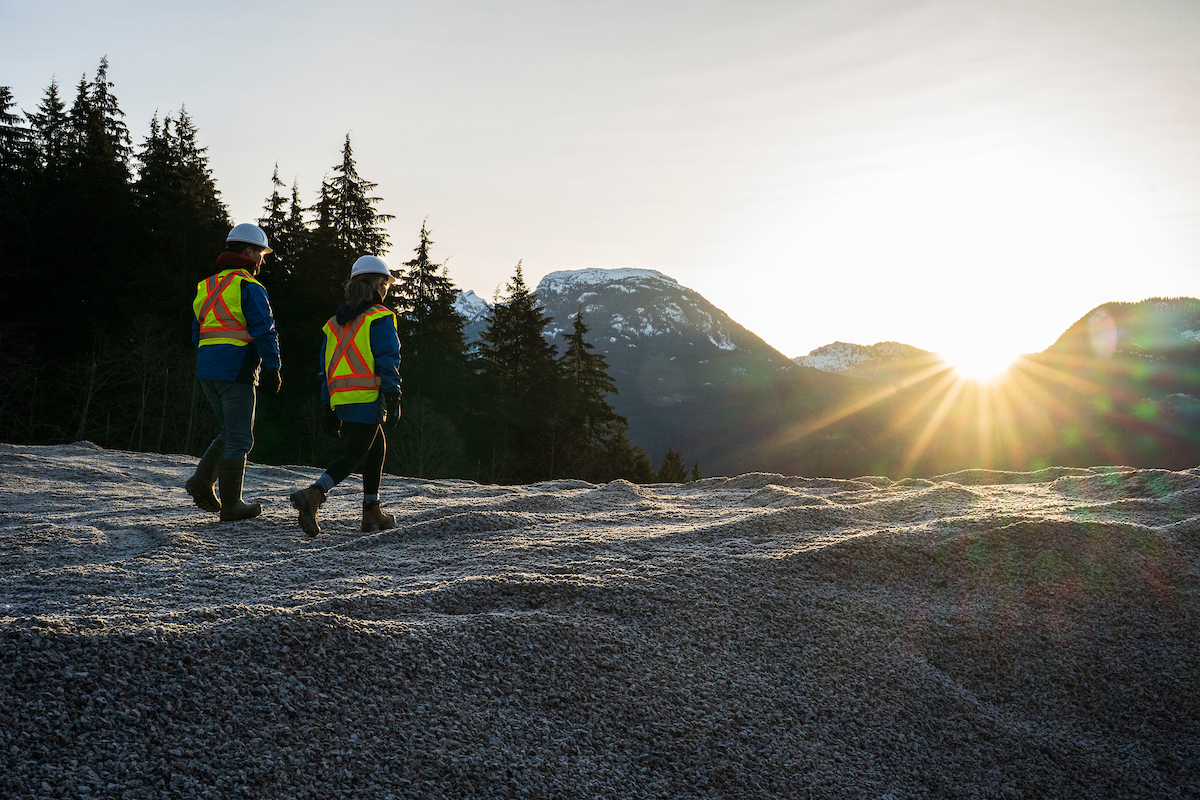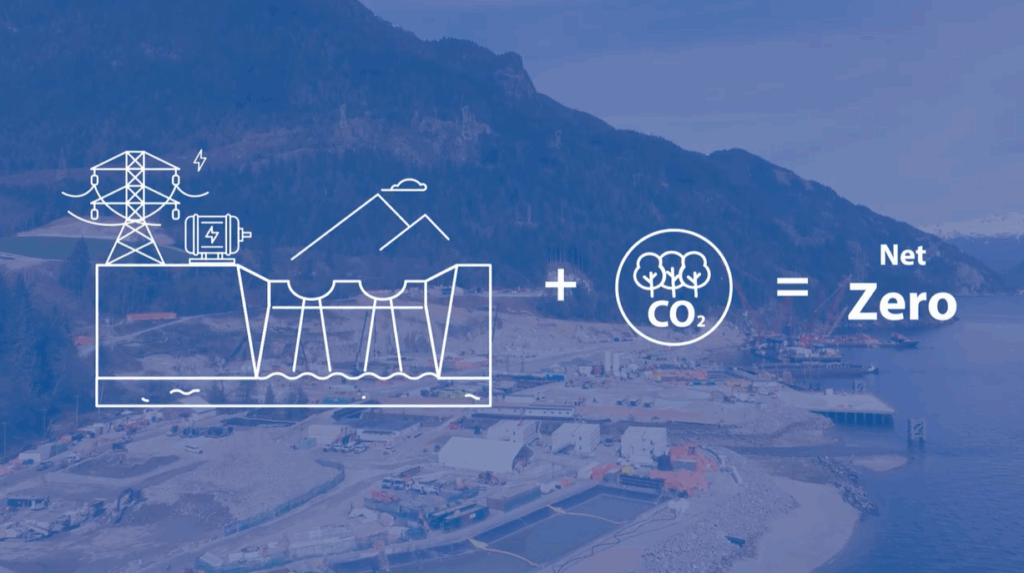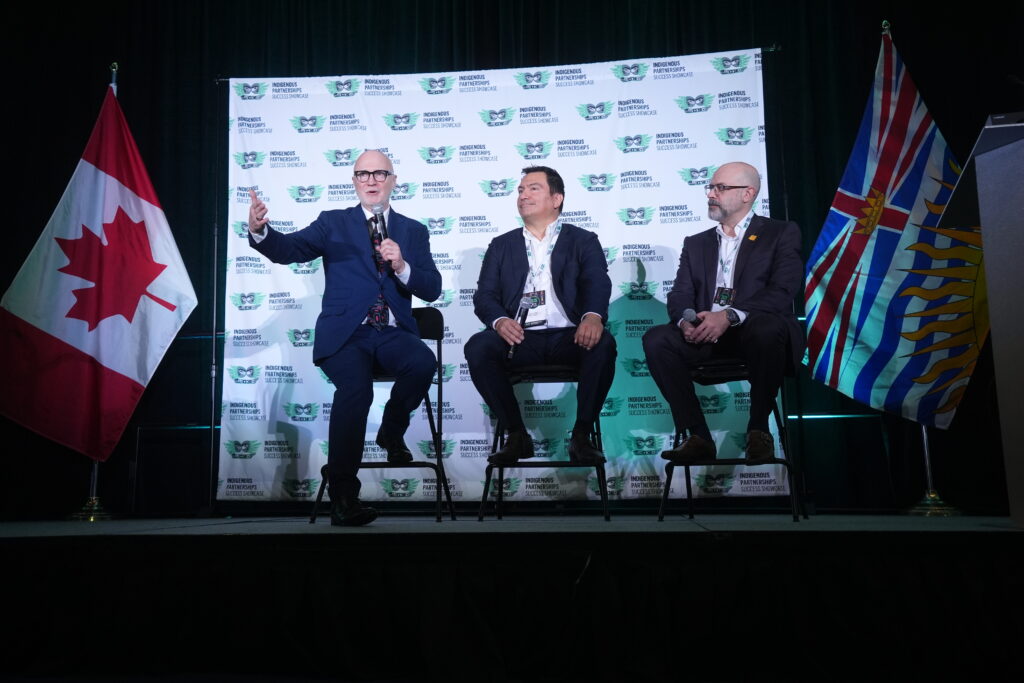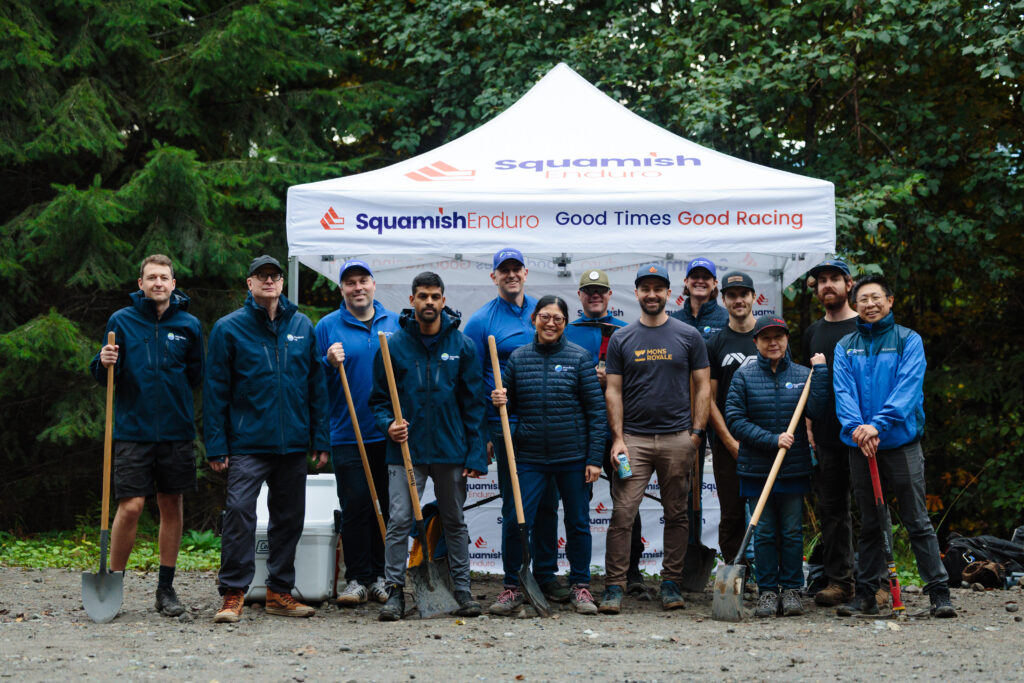News & Insights
Kathleen Robertson: Building a Career in Marine Mammal Protection at Woodfibre LNG
Apr 17, 2025
“I feel a deep connection to the mountains and the oceans. Working at Woodfibre LNG allows me to protect the marine mammals I care about, especially in an area I’ve come to love,” says Kathleen Robertson, Marine Mammal Observer (MMO) and Environmental Field Technician at Woodfibre LNG.
Robertson is an important part of the workforce that ensures marine wildlife is protected in periods when Woodfibre LNG is conducting in-water construction activities.
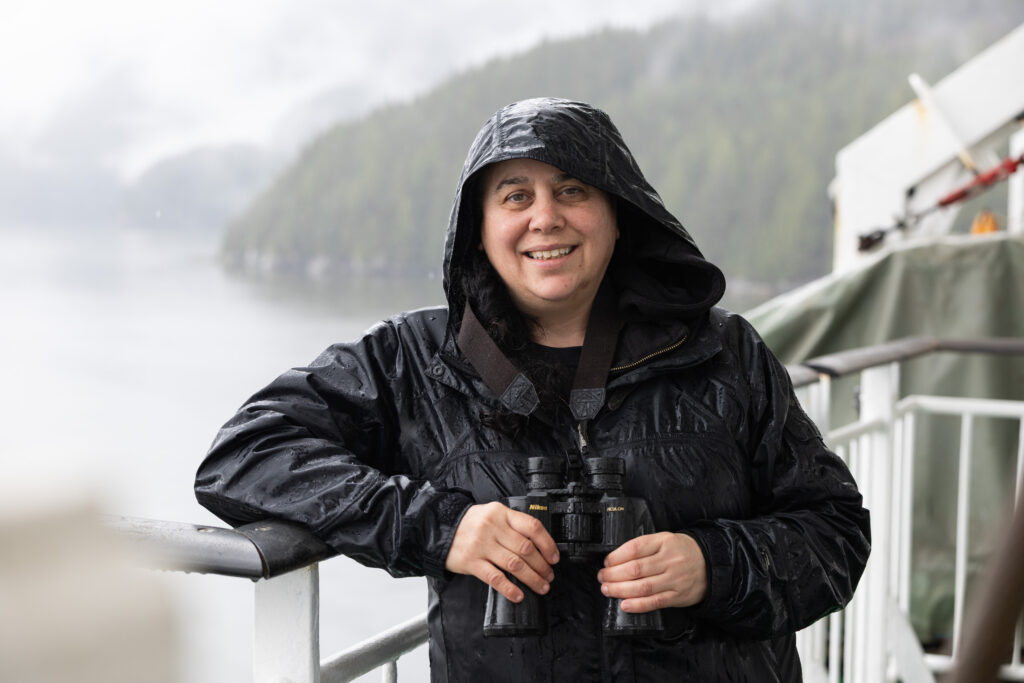
Robertson began working on the Woodfibre LNG Project in 2023 as a Water Quality and Environmental Monitorfor Roe Environmental, the project’s environmental monitoring subcontractor. Originally from Ontario and a member of the Aamjiwnaang First Nation (pronounced am-JIN-nun), Robertson has always felt a strong connection to nature and has a professional background in environmental monitoring. Since moving to British Columbia in 2008, she has been driven by a desire to learn more about marine ecosystems, shaping her career around protecting and understanding marine mammals.
“I started out doing water quality sampling,” Robertson explained. “That was my introduction to marine work. Then I trained as an MMO, and it opened up a whole new world for me.” She earned her Canadian Marine Mammal Observer Certificate with merit and steadily worked her way up, eventually taking on the role of Activity Lead. In this position, Robertson oversees visual observations of marine mammals, deploys and operates hydrophone monitoring equipment, and conducts water quality monitoring when needed.
Marine Mammal Observers are essential on the Woodfibre LNG site to monitor and prevent disruptions to marine life, ensuring project activities comply with environmental regulations that prevent harm to marine mammals. When marine mammals like seals or whales are too close to active marine construction, they enter exclusion zones – areas within a designated perimeter where they could be exposed to underwater noise exceeding conservative project criteria. Work is paused until animals are safely outside exclusion zones, to comply with regulations and to protect them. Marine Mammal Observers like Robertson, use visual monitoring, thermal optics, hydroacoustic devices, and passive acoustic monitoring to detect and track marine mammals. Robertson is building strong expertise in hydroacoustic deployments and passive acoustic monitoring, using technology to listen for marine life and ensure they aren’t disturbed by project activities. “It’s a fascinating field, and I’ve learned so much through this work,” she explained.
“A lot of job sites don’t offer the flexibility to try new things. Here, if you’re interested in learning something, you just have to express it. That’s how I got the chance to move up in my role,” shared Robertson.

Now, she is taking her growth even further. She is enrolling in a course on passive acoustic monitoring to specialize further in her field. Later this year, Robertson plans to enroll in a Marine Mammal Naturalist course to deepen her knowledge of BC’s marine mammals.
Robertson is also passionate about learning more about Indigenous Governance and Indigenous Land Stewardship. She is nearing the completion of her certification in Indigenous Land Stewardship from Native Education College. “I’m taking it to honour my mom,” she shared, “She’s the one who encouraged me to learn more about the connection between Indigenous knowledge and environmental protection.”
Balancing work and study can be challenging, but Robertson says the support from Woodfibre LNG makes it possible. “I wouldn’t be able to do this if I had to worry about all the little things after a long shift. But on the floatel, Woodfibre LNG’s accommodation solution for non-local workers, meals are provided, laundry is done, and I can focus on what I need to do,” she noted.
Beyond the convenience, the floatel has also created a sense of community among her fellow marine mammal observers. “We eat meals together, we have our usual table, and we’ve become a really close-knit group,” Robertson explained, “It’s comforting to have that when you’re away from home for long periods.”
Robertson has also had some unexpected company at work from time to time. A particular harbor seal has become a frequent visitor to the site. “On days that I see the seal, it swims back and forth between the barge and the shore every eight to ten minutes, like clockwork,” Robertson said. “After seeing it so often, I started talking to it. One day, it actually stopped and looked at me, like it understood.”
Between her work, studies, and unexpected marine life encounters, Robertson is carving out a career path that balances her commitment to conservation with the technical understanding of how to best protect marine wildlife. Marine Mammal Observers like Robertson are vital to the construction of the Woodfibre LNG facility as they help ensure that marine life is protected, following the company’s commitment to minimize impacts in every aspect of its operations.
